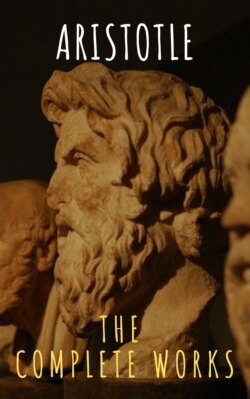Читать книгу Aristotle: The Complete Works - Aristotle - Страница 157
На сайте Литреса книга снята с продажи.
17
ОглавлениеCan the cause of an identical effect be not identical in every instance of the effect but different? Or is that impossible? Perhaps it is impossible if the effect is demonstrated as essential and not as inhering in virtue of a symptom or an accident-because the middle is then the definition of the major term-though possible if the demonstration is not essential. Now it is possible to consider the effect and its subject as an accidental conjunction, though such conjunctions would not be regarded as connexions demanding scientific proof. But if they are accepted as such, the middle will correspond to the extremes, and be equivocal if they are equivocal, generically one if they are generically one. Take the question why proportionals alternate. The cause when they are lines, and when they are numbers, is both different and identical; different in so far as lines are lines and not numbers, identical as involving a given determinate increment. In all proportionals this is so. Again, the cause of likeness between colour and colour is other than that between figure and figure; for likeness here is equivocal, meaning perhaps in the latter case equality of the ratios of the sides and equality of the angles, in the case of colours identity of the act of perceiving them, or something else of the sort. Again, connexions requiring proof which are identical by analogy middles also analogous.
The truth is that cause, effect, and subject are reciprocally predicable in the following way. If the species are taken severally, the effect is wider than the subject (e.g. the possession of external angles equal to four right angles is an attribute wider than triangle or are), but it is coextensive with the species taken collectively (in this instance with all figures whose external angles are equal to four right angles). And the middle likewise reciprocates, for the middle is a definition of the major; which is incidentally the reason why all the sciences are built up through definition.
We may illustrate as follows. Deciduous is a universal attribute of vine, and is at the same time of wider extent than vine; and of fig, and is of wider extent than fig: but it is not wider than but coextensive with the totality of the species. Then if you take the middle which is proximate, it is a definition of deciduous. I say that, because you will first reach a middle next the subject, and a premiss asserting it of the whole subject, and after that a middle-the coagulation of sap or something of the sort-proving the connexion of the first middle with the major: but it is the coagulation of sap at the junction of leaf-stalk and stem which defines deciduous.
If an explanation in formal terms of the inter-relation of cause and effect is demanded, we shall offer the following. Let A be an attribute of all B, and B of every species of D, but so that both A and B are wider than their respective subjects. Then B will be a universal attribute of each species of D (since I call such an attribute universal even if it is not commensurate, and I call an attribute primary universal if it is commensurate, not with each species severally but with their totality), and it extends beyond each of them taken separately.
Thus, B is the cause of A’s inherence in the species of D: consequently A must be of wider extent than B; otherwise why should B be the cause of A’s inherence in D any more than A the cause of B’s inherence in D? Now if A is an attribute of all the species of E, all the species of E will be united by possessing some common cause other than B: otherwise how shall we be able to say that A is predicable of all of which E is predicable, while E is not predicable of all of which A can be predicated? I mean how can there fail to be some special cause of A’s inherence in E, as there was of A’s inherence in all the species of D? Then are the species of E, too, united by possessing some common cause? This cause we must look for. Let us call it C.
We conclude, then, that the same effect may have more than one cause, but not in subjects specifically identical. For instance, the cause of longevity in quadrupeds is lack of bile, in birds a dry constitution-or certainly something different.
